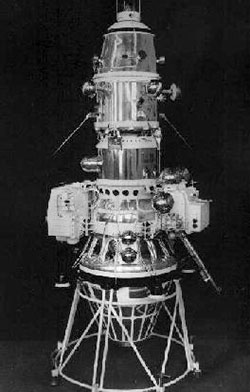Luna Series
Luna Series

The Luna 10 spacecraft. (Credit: Soviet Space Program)

Diagram of the Luna 11 and 12 spacecraft. (Credit: Soviet Space Program)
The Luna program was a series of robotic spacecraft sent to the moon by the Soviet Union to study the the Moon's chemical composition, gravity, temperature and radiation. Luna 10 and 12 were the first Luna spacecraft intended to orbit the moon, rather than going in for a hard or soft landing. In addition to instruments for studying the lunar environment, both Luna 10 and 12 carried a gamma-ray detector which measured the gamma-ray background during their flight to the moon.
Lifetime: January 1959 (first launch, Luna 1) - August 1976 (last satellite, Luna 24, returns sample to Earth)
Country (primary): Soviet Union
Primary Science
The Luna program was aimed at studying the environment of the Moon, including returning the first close-up images of the lunar surface and measuring the Moon's chemical composition, gravity, temperature and radiation.
Links to more information
Luna 10
Lifetime: March 1966 - May 1966
Science Highlights
- First human-made object to orbit the moon.
- Measured the cosmic gamma-ray background and found an exponential decrease in the number of gamma rays with energy up to about 1.5 MeV with a roughly flat spectrum above that.
- Measured the gamma ray emissions from the lunar surface and rocks.
Luna 12
Lifetime: October 1966 - January 1967
Science Highlights
- Measured the cosmic gamma-ray background and found an exponential decrease in the number of gamma rays with energy up to about 1.5 MeV with a roughly flat spectrum above that.
- Measured the gamma ray emissions from the lunar surface and rocks.

